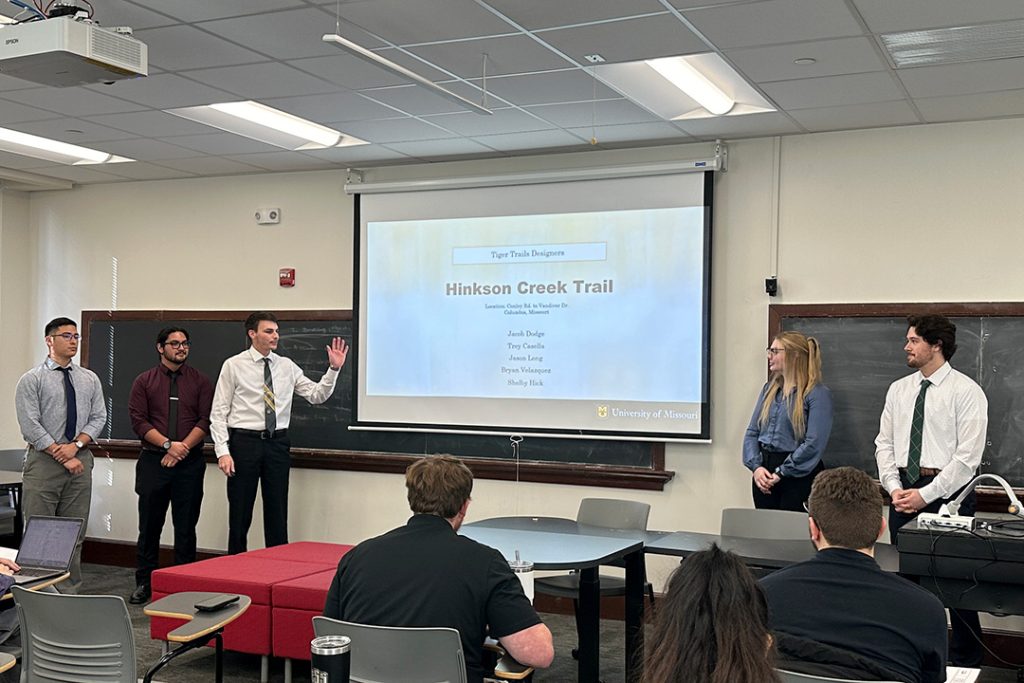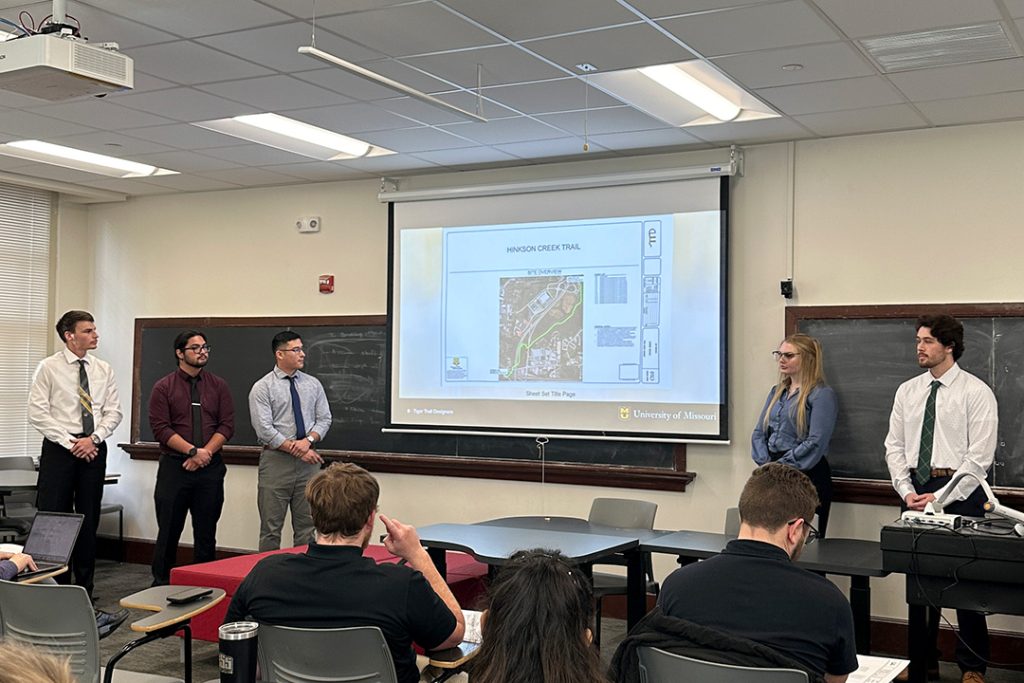January 12, 2024
At Mizzou Engineering, we know that there’s no substitute for learning through experience. We persistently provide hands-on learning opportunities for students to jump into projects similar to ones they’ll take on in their careers. That’s why capstone courses are a key pillar of our curriculum as they allow students to apply concepts they’ve learned in their classes.
Students studying civil engineering work with a client to develop a solution to an engineering problem, and in the process gain experience working in their desired field with a tangible objective.
This fall, one capstone group documented their project—a collaboration with the Missouri Department of Transportation (MoDOT) and City of Columbia Parks and Recreation, designing a potential path for the Hinkson Creek Trail—as an example of how a Mizzou Engineering education prepares students for their careers.

The Project
The new trail is expected to connect Conley Road to Vandiver Drive around the area of the Highway 63 and Interstate 70 interchange. The new Hinkson Creek Trail will also be mixed use, accommodating both pedestrians and cyclists, and the team needed to ensure compliance with both ADA and environmental regulations before finalizing their proposed design.
The students worked with MoDOT and the City of Columbia’s guidelines to develop this proposal for a trail that would be a part of a bigger planned trail project around the city.
The Process
The team began by designing multiple trail path alternatives for their clients to choose between based on their locations, cost and logistics. Of their initial two trail path alternatives, one included no bridges—alternative A— and the other included two bridges—alternative B.
In creating these alternatives, the students looked at aesthetic factors, distance from the highway and noise pollution, how to handle changes in elevation and trail difficulty. They also considered how disruptive different forms of construction would be and how to minimize the amount of added natural materials, such as extra soil, to level out elevation changes, as well as cost.
After selecting a route, the team’s next steps were performing an in-depth review of the final layout, which included an analysis of slope steepness, a floodplain analysis, drawing sheets, profile views, plan views, typical sections and a detailed final cost analysis, to present to their clients.
The Outcome
In the end, the team chose neither of their initial trail configurations for the Hinkson Creek Trail and instead opted for a modified version of alternative A. The proposed trail would include no bridges, fewer switchbacks and retaining walls for structural stability. This design improved access for emergency vehicles over both prior options and made it easier for bikers and pedestrians to navigate. The proposed trail would also be more conducive to beginners.

In addition to gaining experience working with a client and developing a proposal that fulfilled both state and federal regulations and clients’ requirements, the team gained soft skills essential to being a successful engineer.
“One of the biggest takeaways from working on this capstone project was teamwork,” said Jacob Dodge, team leader. “This project had a lot of moving parts and a lot of different people working on different sections that in the end had to mesh together as one project. So being able to communicate with one another and keep it on track with who is doing what when was really valuable experience for me.”
Project engineer Jason Long agreed.
“Communicating with team members and clients is crucial in order to succeed in projects like this—to be able to put something together and deliver a finished product,” he said.
Discover civil engineering at Mizzou!